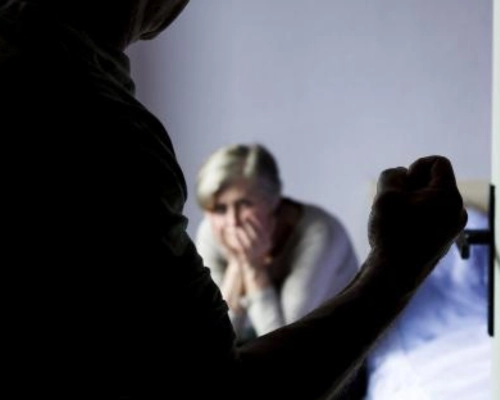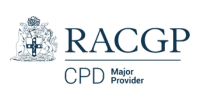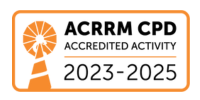This week we revisit a case from Dr Mazharul Islam, in which a 56-year-old lady presents for a...
.jpg?height=200&name=HCE%20HubSpot%20blog%20images%20600x350%20(32).jpg)
Learn to identify and support victims of neglect, abuse, and violence in primary care.

This course will provide you with comprehensive knowledge on the role of the GP in preventing, intervening, supporting and following up victims of suspected abuse, in addition to helping vulnerable patients access support services and continuing care.
- Explore how to assess and manage neglect, physical and sexual abuse in adults and children.
- Recognise elder abuse issues, injury types, and the effects of ageing on healing.
- Understand mandatory reporting and onward referral.
- This course is for physicians, nurse practitioners, and degree-qualified nurses.
- CPD-accredited.
100% online
$1095
Special rates available
30 hrs
Self-paced
- Recognise potential abuse situations to provide timely support for your vulnerable patients.
- Ensure the safety of at-risk children by spotting signs of maltreatment and taking action.
- Assist sexual abuse victims and help them access medical and support services.
- Identify maltreatment in elderly patients and connect them with support services.
Get unlimited access to all course content, additional learning materials, ongoing post-course support, and more.
This module opens with the definition, prevalence and legislation of child maltreatment. The process of mandatory reporting is provided. Unit two includes clinical images of various trauma injuries include bruises, abrasions, burns and bites that relate to physical abuse. Unit three outlines the clinical process when physical abuse or neglect is displayed. Presenting features including risk factors of presenting guardian characteristics and the child factors are discussed. Cutaneous injuries including bruising and burns are described and supported by clinical images. Differential diagnoses are considered including dermatological conditions. The consequences of abuse are outlined. Unit four focuses on the role of the GP and the process of managing these clinical presentations including the involvement of paediatric forensic and support services.
This module commences with outlining sexual offences against children. Rules may vary in different jurisdictions. Definitions, prevalence and legislation details are included. The male and female ano-genital anatomy is described in unit two. The process of forensic examinations for sexual assault are outlined in unit three and features a clinical case. Unit four focusses on the role of the GP and how a child may present. This includes features and signs to consider regarding the guardian’s characteristics and the child’s presenting profile. The process of managing these clinical presentations and aftercare is outlined. STIs, mental health and associated medical conditions are considered. The involvement of paediatric forensic and support services completes this module.
This module on domestic abuse reviews the definition and support mechanisms when patients present who are in a domestic abuse relationship. Statistics related to its prevalence and impact both worldwide and in Australia are listed. It discusses the role of general practitioners in responding, supporting and treating women who disclose experiences of domestic violence in a supportive, non-judgemental manner. Signs and symptoms to identify domestic violence including psychological and behavioural symptoms are outlined. Screening information and understanding the reasons why a woman does not find it easy to leave an abusive relationship are included. Techniques to provide a safe environment and how to respond to disclosures including follow-up care and responsibilities are addressed. The module includes advice about the most effective response to patient disclosure both immediately and as part of a long-term plan for follow-up, and continuing care, including information about available resources and support services.
This module opens with the definition and estimated prevalence of elder abuse. The ageing and healing processes of the skin and bones is detailed including images. Unit three outlines the physical signs of elder abuse and the possible causal factors for these injuries. Bruising injuries are discussed including differential diagnoses – for example, bleeding disorders and medications. Suspicious bruising, abrasions, lacerations and incisions are described and supported with clinical images. Bites, burns and fractures are also considered. The module then moves to self-harm, defensive and other injuries including sexual assault injuries. How to assess elder patients and avoiding diagnostic errors are described. Unit four discusses the GP role and includes why it’s easy to fail to diagnose in this challenging area. Risk factors, signs and symptoms covering general, physical, sexual, emotional, economic and neglect are incorporated. Support services information complete this module.


Originally from NSW, Ramya relocated to WA when she was awarded a place at the reputable Notre Dame medical school. Since completing her medical degree, she has completed further diplomas in child health and women’s health to support her areas of interest.
She also shares the training ethos that we hold at Skye Medical and works training the next generation of WA doctors, both at student level and GP trainees. Ramya enjoys the variety of medicine in general practice and is available for appointments to deal with all conditions and concerns.

Bundle two courses and save 5%, or three courses and save 10% upon enrolment.
Talk to us about deferred payment options, registrar scholarships and special rates.
*For Australian residents only: Online course prices are shown exclusive of GST. If you are GST-registered, please enter a valid ABN at checkout to ensure GST is not applied. Otherwise, 10% GST will be added at checkout. View our FAQ for more information.

Great course! it is very relevant to all practising GPs. Who knew that there is a pathologist "secret". Every GP should know this!
Dr M. Parashar
Highly satisfied. Real patients and cases enhance the learning experience. I will attend the advanced course.
Dr N. Kazi
Don't miss this course! It's interesting, practical and enjoyable. After attending courses for 30 years, I rank this as number one. The course is very useful to all doctors who diagnose and treat skin lesions. Top marks to the organisers.
Dr P. Laundy
Everything was very relevant and easy to understand. Certainly in a very different league to all the other courses I have attended.
Dr M. Kaur
I wish I had completed this course two years ago. My time in general practice so far has not enhanced my diagnostic or surgical skills and I have been scared about skin checks! I actually feel not only confident but empowered. A fantastic course! Thank you!
Dr A. Mooney
HealthCert courses have become the standard by which you gauge all others.
Dr K. Abolarinwa
Good courses with excellent speakers. I particularly enjoyed the case study scenarios which helped to integrate the knowledge gained.
Dr A. Tucker
This is the pathway to improve your confidence and evolve into the GP you aspire to be.
Dr S. Shinwari
| RACGP Activity Number | ACRRM Activity Number | Activity Title | Education Hours | Performance Hours | Outcome Hours | ||
|---|---|---|---|---|---|---|---|
| 516707 | 31274 | Child sexual abuse | 516707 | 31274 | 4 | 6 | 0 |
| 516711 | 31275 | Elder abuse | 516711 | 31275 | 4 | 6 | 0 |
| 516696 | 31273 | Child physical abuse and neglect | 516696 | 31273 | 4 | 6 | 0 |
| Total hours | 12 | 18 | 0 | ||||
View the CPD Hours for all HealthCert Education activities.
HealthCert Education provides a variety of Outcome Measurement activities to suit your needs. Please contact an Education Advisor for more information.
The Foundation Certificate of Domestic Abuse & Violence is tailored for medical practitioners who wish to improve patient outcomes by identifying and supporting victims of neglect, abuse and violence in primary care.
This course is for physicians, nurse practitioners, and degree-qualified nurses. There are no prerequisites.
Participants will require access to a computer/laptop, an internet connection and a basic level of technology proficiency to access and navigate the online learning portal.
Participants who have already successfully completed the module on Domestic Violence and Women's Health as part of the HealthCert Professional Certificate of Women's Health may request a one-module reduction in fees for this course. The module examination questions will still need to be completed to ensure knowledge remains current.
Further professionally recognised qualifications and prior studies may be recognised for entry into this course if the learning outcomes match exactly. Please ask a HealthCert Education Advisor for an individual assessment of your prior qualifications and experience.
Upon successful completion of the course, course participants will receive a Foundation Certificate of Domestic Abuse & Violence and CPD hours.
This certificate course:
To learn more about the delivery of certificates in Australia and overseas, please visit our FAQs.
This organisation is an RACGP-accredited CPD provider under the RACGP CPD Program.



Don't see your question? Explore other faqs or talk to us.
Fees will vary based on the program and study option selected (fully online vs online + optional practical workshop). Payments can be made upfront or in monthly instalments. Special rates and various payment options are available. GP registrars and doctors in training enjoy a scholarship of up to $500. Talk to us to learn more.
Completion of any HealthCert course or attendance at an event will enable you to access the HealthCert Alumni Program which includes:
HealthCert Education is pleased to issue digital credentials for alumni. Digital credentials are a permanent online record of your successful completion of a HealthCert course and are issued to all course participants in addition to PDF certificates. If you are based in Australia, you also have the option to order a hard copy of your digital certificate for a small additional fee.
The recommended study duration of this certificate course is 30 hours, which includes study of the pre-course activities and readings, online lectures, live tutorials, and online assessment. This self-paced course offers the flexibility of 100% online study in your own time, at your own pace, in your own home or office, with no mandatory face-to-face requirements. You are not required to be online at specific times but can view and replay video lectures at your convenience.
All HealthCert courses meet World Federation of Medical Education standards. This certificate course qualifies for CPD hours from the Royal Australian College of General Practitioners (RACGP) and the Australian College of Rural and Remote Medicine (ACRRM) in Australia. It is recognised by the Royal New Zealand College of General Practitioners (RNZCGP) in New Zealand. It is recognised by the Hong Kong College of Family Physicians (HKCFP) in China. It is a self-submitted activity in Dubai and the United Kingdom. It is a self-submitted activity through the College of Family Physicians in Canada. If you live or work outside one of the above-mentioned countries, please contact us on admin@healthcert.com to discuss whether this course can be recognised in your country.
Want to stay up-to-date with the latest case studies, podcasts, free video tutorials and medical research articles pertinent to primary care?
Our Education Advisors can assist you with any queries and tailor our education pathway to suit your current expertise, interests and career goals.